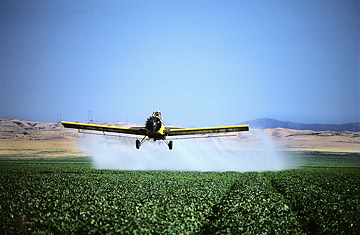
Dichlorodiphenyltrichloroethane (or DDT, to avoid the mouthful) was supposed to be a magic bullet against insect infestations. The insecticide was so effective, experts talked about finally eradicating illnesses like malaria and improving crop yields safely and cheaply. The chemist who discovered the compound's use as an insecticide even won the Nobel Peace Prize for his efforts. One tiny little problem — no one stopped to check the effect DDT had on the environment all by itself.
As a result, DDT birthed one of the first environmental-related panics. Biologist Rachel Carson penned the seminal book Silent Spring, questioning the widespread use of DDT and outlining its disastrous effects on the environment. Accumulating in the soil and in the food chain, DDT could reach toxic levels among animal populations as far away as the Arctic. Later testing revealed it also had damaging health effects on people, causing confusion, reproductive damage and increased cancer rates. The resulting outcry was enough to cause DDT to be banned in the U.S. in 1972.